Television
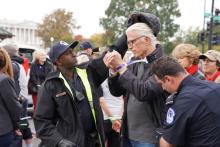
There is no such thing as staying out of politics.

A few days ago, I gathered with my two Potawatomi sons on our couch to watch Molly of Denali, a cartoon that recently premiered on PBS starring a young girl named Molly who is an Alaska Native (specifically, Gwich’in/Koyukon/Dena’ina Athabascan). This show is the first of its kind in the history of the United States.
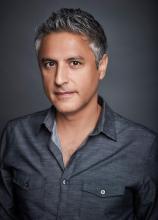
So far, Aslan’s cable shows — including his Muslim-American family sitcom that was dropped by ABC — have not panned out. But his ambitions to reach a broader audience remain as large as ever. And unlike the somewhat braggadocios and didactic style of commentary that he’s become known for in front of television cameras, he’s eager to change minds while occupying a different place: behind the camera.
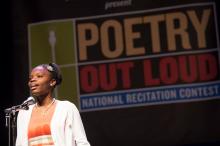
The Corporation for Public Broadcasting provides nationwide access to public radio, television, and other non-commercial telecommunications services. The National Endowment for the Arts provides Americans with funding needed to engage with the arts and facilitate arts projects. The National Endowment for the Humanities provides funding to museums, libraries, and institutions of higher learning to promote study of the humanities.

Ultimately, as audience members, we have the power to control what we see. TV execs need our eyes watching the programming they select, and if we say we want diversity — if we purposefully watch more shows that are inclusive and that introduce us to narratives and cultures that are simultaneously new to us and reminiscent of our own lives — we can change the television landscape. We can change what we see and thus make sure that everyone is seen.
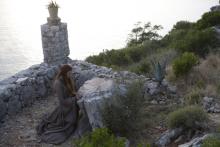
Game of Thrones, the engrossing, sometimes disturbing, always exciting TV series returns for a sixth season Sunday night on HBO. The network is not releasing screeners, so it’s anybody’s guess what’s going to happen. But one thing you can bet on — the television show, like the books by George R.R. Martin they are based on, involve storylines with religious elements. Considering where some of those stories left off, religion may come further to the fore in the new season. Here’s a primer on a few of the religions of Westeros, the imagined, medieval-inflected world of Game of Thrones.

I FIRST BEGAN watching The Leftovers, HBO’s drama based on a novel of the same name by Tom Perotta, when it debuted in the summer of 2014. Like many viewers, I was fascinated by the premise: On Oct. 14, 2011, 2 percent of the population suddenly disappears in a rapture-like event. The show begins three years after what is called the “Sudden Departure,” and rather than explaining the metaphysical meaning of this mysterious event, it focuses on how the members of one family process their grief.
Throughout the show’s first season, we’re introduced to an array of characters who deal with the Sudden Departure in different ways. Some want to continue with life as it was on Oct. 13, 2011, before the world changed. Some are tortured by the mystery of the Departure and why they weren’t “taken.” Some seemingly well-adjusted people join the cults that have sprung up since the event. One group in particular has gained the most traction, the Guilty Remnant. The group exists to be “living reminders” of God’s judgment; they make it their mission to make people remember, but offer no comfort. Another cult features a messianic leader who promises to absorb the pain of anyone who hugs him, but offers no spiritual or intellectual balm for the hurt and confusion post-Departure.
The novel on which the show is based was written as a response to the way the world changed after Sept. 11, so it was particularly poignant that the attacks in Paris occurred as I watched the second season of The Leftovers. Certainly it’s grievous to see violence occur anywhere, but as with Sept. 11, the attack on Paris brought with it a shocking cognitive dissonance: That kind of thing doesn’t happen in places like this—Western, cosmopolitan, relatively safe. Before the attack in Paris, before the Twin Towers fell, there was always the possibility that something tragic could occur on a random Friday night or Tuesday morning. But perhaps to many of us who live in relative comfort and ease, violence and tragedy are what happens to other people, in other places. It is this cognitive dissonance and the subsequent question of how to live in uncertain times that the second season of The Leftovers explores. It is also what makes it worth watching.
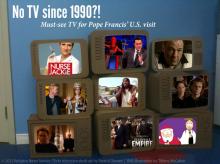
Pope Francis told an Argentine newspaper on May 25 that he hasn’t watched television since 1990. Think of all he’s missed, not just in terms of popular culture, but also in terms of American Catholicism. Here, in no particular order, are seven television shows the pope might want to catch up on before his September U.S. trip.
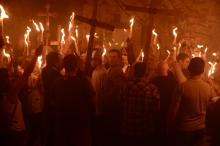
Archaic prayers, hidden keys, and secret religious orders — such are the elements of the latest episode of the USA Network’s biblical conspiracy action series Dig.
Add in a modern re-enactment of one of the most harrowing stories in the Hebrew Bible, and the result is a swirling, baffling stew of religious themes and imagery.
This is your spoiler alert! Read on if you are up to date on Dig or a glutton for punishment.
“It’s all about the End of Days, the Second Coming, Armageddon, the Rapture,” Debbie (Lauren Ambrose) says in what is the clearest explanation by any character of what is going on in Dig to date.
“In order to bring about the Second Coming, the Temple in Jerusalem needs to be rebuilt.”
Here’s a quick summary of some of the religion references in this week’s episode:
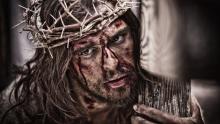
Need proof that biblical entertainment is Hollywood’s holiest trend? Then look no further than Morocco, where three TV projects — National Geographic Channel’s Killing Jesus, NBC’s A.D. The Bible Continues and CNN’s Finding Jesus — were filmed on neighboring sets last year.
“You got this kind of Life of Brian-esque world you’re living in, where on all of our days off, there’s 36 disciples sitting around the pool and three Jesuses at the bar,” said actor Stephen Moyer, who ditched the fangs from True Blood to play Roman governor Pontius Pilate in the Ridley Scott-produced Killing Jesus.
Based on Fox News host Bil O’Reilly’s follow-up to the books he co-wrote with Martin Dugard, Killing Lincoln and Killing Kennedy, Killing Jesus tracks the last days of the Christian Messiah. Played by Muslim actor Haaz Sleiman, he is portrayed less as a miracle worker and more as a political threat, and the script heightens the sexual tension between Jesus and follower Mary Magdalene (Klara Issova).
“It plays with the idea that Jesus’ teachings are more important than the doing of miracles, that the idea behind what he’s saying is the point and it doesn’t need to have out-of-body, magical elements happening,” Moyer said.
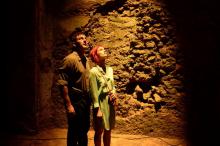
Breathlessly describing his new USA Network series “Dig” in a promo, leading man Jason Isaacs promises “everything is based on reality and true.”
To a point.
The new series, which premiered March 5, moves quickly between multiple story lines and locations, bouncing off prophesies and spinning conspiracies around the Second Coming of Christ, the Book of Revelation and the restoration of the Jewish Temple in Jerusalem, where much of the series is filmed.
Throw in a high priest’s magical breastplate, a spotless red heifer, and a doomsday Christian group living in a bunker and the series becomes the would-be love-child of Steven Spielberg and Dan Brown.
And that’s just the first episode.
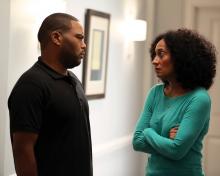
Black-ish, the new ABC sitcom created by Kenya Barris, really is one of the funniest shows on TV this season. I laughed my head off watching a marathon run of the first four episodes On Demand. Now it's set to record each week on DVR. One of the things I really appreciate about Black-ish is that it takes universal issues and works them out through a genuinely African-American lens.
For example, in the pilot episode the father, Andre “Dre” Johnson, played by Anthony Anderson, is looking forward to a much deserved promotion to Senior VP at a major marketing firm. He is surprised to find out he’s been promoted to Senior VP of the Urban Division. We can all relate to wanting the promotion, but Anderson’s challenge is one particularly familiar within the black professional class. How do you jump the dreaded, yet anticipated, pigeonholing of your value and worth to an organization as a “black” person? How do you become just Senior VP — not SVP of the “Urban” Division? How do you become human? The way Anderson works out this challenge is hilarious. I rolled with laughter even after the half-hour sitcom had reached its conclusion.
And then there’s last week’s episode when the biracial mother, Rainbow, masterfully played by Tracee Ellis Ross, loses her young son, Jack, while shopping at a department store. It turns out Jack is hiding inside a clothes rack and is eventually found by a sympathetic officer. We can all relate to this situation. Children hide in department stores. I did the exact same thing to my own mother when I was about Jack’s age. I hid between the racks at a Marshalls. But Rainbow and Dre’s conundrum rears its head when they are confronted with the question: Will they spank their son? It seems simple enough, but it’s not. This is not only a question of parenting, it is also a question of tradition and culture.
In fact, each episode presents a universal situation that pushes a particular issue of culture within the African-American community. Ultimately, the situation presses the question: “What does it means to be black?”
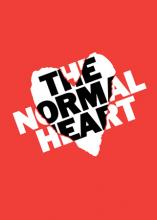
IT’S A TRUISM to say that television is outpacing cinema for entertainment quality and depth of exploration. Since The Wire appeared a decade ago, studios have been realizing that there is an audience for long-form storytelling that is willing to think.
Recently I’ve been struck by the set-in-the-’80s espionage thriller The Americans, the deeply haunting police procedural True Detective, the hilarious pathos of Louie and Veep, and the sly, shocking Hannibal, a prequel to The Silence of the Lambs: All hugely entertaining, dramatically credible, and challenging both as works that require sustained attention and in terms of what they say about life. The Americans is really an exploration of marriage and cultural identity wrapped up in Cold War cloaks-and-daggers; True Detective is a lament for the broken parts of America, and an affirmation that friendship endures above almost everything else; and Hannibal is a postmodern delving into Dante’s Inferno, looking at the underbelly of Aleksandr Solzhenitsyn’s assertion that “the line dividing good and evil cuts through the heart of every human being.”
What’s most exciting is that it’s now considered viable to make drama that actually asks real questions about life and is prepared not to answer them pat. Along with the vast amount of social media conversation about these works, what we have is more akin to ancient forms of public entertainment that required a kind of audience participation—theatrical catharsis meeting gathered conversation to produce a community hermeneutic. When we talk about TV and cinema, we’re talking about ourselves.
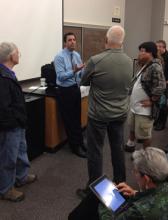
Move over, Christian televangelists. Atheism is coming to television.
“Why are we going to television?” he asked the audience, a mix of about 100 students and people from the local community. “It’s part of our strategy of going where we are not.”
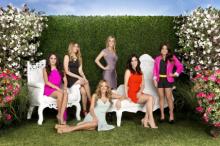
Meet Amanda, Casey, Ashlee, Chanel, Joey, and Erica. They spend their time and their parents’ money shopping for designer labels, searching for rich husbands, and lounging by the pool with a glass of wine in hand.
They’re self-admitted “Jewish American Princesses,” and Bravo’s built a whole reality series, "Princesses: Long Island" around their exploits. The show follows six unmarried 20-something Jewish women living with their parents on New York’s Long Island. The first two episodes were titled “You Had Me at Shalom” and “Shabbocalypse Now.”
“Everybody has a stereotype of a Long Island Jewish girl,” cast member Ashlee White said on the show’s June 2 premiere. “People get so offended! I’m like, ‘Bring it.’ I’m Jewish, I’m American, and I’m a princess.”
And that’s where some Jews — and even some Long Islanders — have a problem.

When it comes to mass communication, Christians do some things well and some things horribly. Here’s a breakdown:
1) The Best
Public Speaking:
Christians have been publicly speaking for thousands of years — since Old Testament times. Church culture is inundated with motivational and inspirational presentations, sermons, illustrations, speeches, and teachings. Sunday schools, youth groups, small groups, church services, camps, retreats, and conventions all have a variety of public speakers.
Christians were experts at the art of speaking before TED Talks became popular or business presentations were commonplace. People working in full-time ministry often speak in front of groups at least two or three times a week — sometimes more. They can sense when audiences are engaged or bored and have the ability to whip stadium crowds into an emotional and spiritual frenzy.

“Be still and know that I am God.” - Psalm 46:10a
From April 29 to May 5 individuals, households, and communities will celebrate Screen-Free Week by disconnecting from their screens — TV, computers, games, mobile devices — during their free time and reconnecting with relatives, neighbors, the natural world, and the quiet voices that may be drowned out by the constant barrage of electronic noise. My neighborhood celebrated early so we could offer a variety of cost-free and screen-free family activities during the school's spring break week. I organized the celebration, as I've done for the last six years. It was satisfying to see kids slow down and engage in gardening, carpentry, music making, nature exploration …
I also observed Screen-Free Week myself. Seven days of fasting from electronic media showed me how much time I spend using then mindlessly and forced me to confront my idolatries that are fed or masked by this mindless use. I'm using Michael Schut's definition of idolatry:
"An idol is anything we put before God, a partial truth mistaken for the whole Truth, a lesser good elevated to the ultimate good. … Idols [promise] what they cannot deliver."
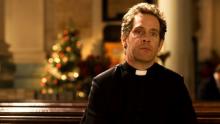
This Christmas, for the spirituality-and-pop-culture enthusiasts on your gifting list, consider the following: Be kind and rewind.
Give them the gift that keeps on giving ... long after the series has been cancelled.
Rev. The Vicar of Dibley. Saving Grace. Davey and Goliath. Pushing Daisies. Six Feet Under. The Book of Daniel. Lie to me. Lost. And Northern Exposure.
 ++ Join us in showing our appreciation for Catholic women religious (aka nuns or "sisters") on Thank-a-Nun Day, May 9. Click HERE to send a thank-you note online. ++
++ Join us in showing our appreciation for Catholic women religious (aka nuns or "sisters") on Thank-a-Nun Day, May 9. Click HERE to send a thank-you note online. ++
Silly and serious, strict and kind, profoundly faithful and sometimes hilarious — Catholic nuns are evergreen characters on the big (and the small) screens. Here's a list of some of our favorite portrayals of Catholic women religious from film and television.
1. Sister Helen Prejean (Susan Sarandon) in Dead Man Walking
2. Mother Abbess (Peggy Wood) in The Sound of Music
High School students send a rubber chicken into space -- Fresh Prince's Alfonso Ribiero leads largest dance flash mob -- vintage mugshots available online -- John Hodgman and Jonathan Coulton's sentimental duet -- President Obama 'slow jams the news' with Jimmy Fallon and The Roots. See this and more in today's Links of Awesomeness...